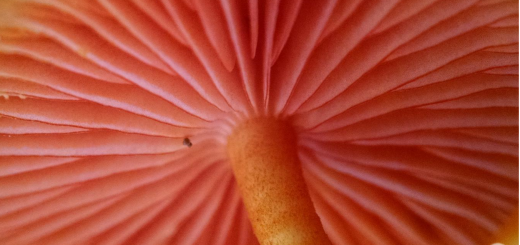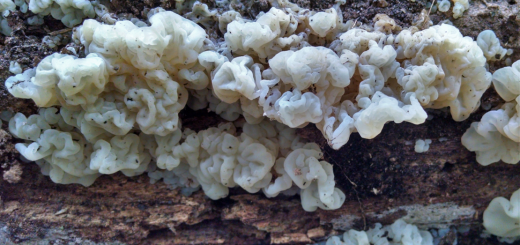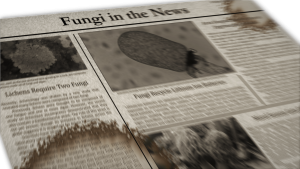#001: Armillaria ostoyae, the Humongous Fungus
Welcome to Fungus Fact Friday! To start off this exciting new series I have chosen a simple yet amazing fungus fact: the largest known living, single organism on the planet is a fungus; Armillaria ostoyae to be specific! The Armillaria genus contains good edibles and includes species commonly known as “honey mushrooms” or “shoestring fungi.” The second name comes from the thick, black rhizomorphs that connect various areas of the fungus together. These rhizomorphs form under the bark of trees that the fungus attacks parasitically and extend through the soil from tree to tree. This infection causes the trees to die back, which makes the 2,385 acre area the fungus has colonized visible from the air. DNA tests taken from ostoyae samples all around the infected area showed that this was one individual (for the moment I have put aside the “what is an individual?” debate, a very confusing subject in mycology). This individual is estimated to cover 2,385 acres, weigh 7,567 to 35,000 tons, and be 1,900 to 8,650 years old. The first “humongous fungus” was discovered in 1992 near Crystal Falls, Michigan. Although this specimen (A. gallica) only covered 37 acres, the publicity this first humongous fungus received was enough to earn it a place on the side of U-Haul vans (http://www.uhaul.com/SuperGraphics/69/Venture-Across-America-and-Canada-Modern/Michigan).
See Further:
http://www.scientificamerican.com/article.cfm?id=strange-but-true-largest-organism-is-fungus
USDA humongous fungus brochure: http://www.fs.usda.gov/Internet/FSE_DOCUMENTS/fsbdev3_033146.pdf









![#011: Characteristics of Kingdom Fungi [Archived]](https://www.fungusfactfriday.com/wp-content/themes/hueman/assets/front/img/thumb-small-empty.png)


3 Responses
[…] actually parasitic on plants. Rusts and smuts do tremendous economic damage to crops every year and Armillaria species are some of the most efficient tree-killing fungi, much to the chagrin of foresters. Many […]
[…] individuals (though it can’t compete with the absolutely enormous Humongous Fungus, A. solidipes, FFF#001). The last measurable A. tabescens individual I came across was roughly 72m long. Honey mushrooms […]
[…] fungus was found to cover 30 acres and scientists estimated it was about 1,500 years old (see FFF#001). Since 1992, larger fungi have been found, but researchers recently decided to revisit the […]